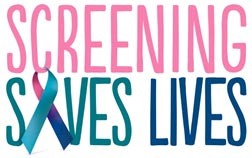Abstract
Background: In their 2021 lung cancer screening recommendation update, the U.S. Preventive Services Task Force (USPSTF) evaluated strategies that select people based on their personal lung cancer risk (risk model-based strategies), highlighting the need for further research on the benefits and harms of risk model-based screening.
Objective: To evaluate and compare the cost-effectiveness of risk model-based lung cancer screening strategies versus the USPSTF recommendation and to explore optimal risk thresholds.
Design: Comparative modeling analysis.
Data sources: National Lung Screening Trial; Surveillance, Epidemiology, and End Results program; U.S. Smoking History Generator.
Target population: 1960 U.S. birth cohort.
Time horizon: 45 years.
Perspective: U.S. health care sector.
Intervention: Annual low-dose computed tomography in risk model-based strategies that start screening at age 50 or 55 years, stop screening at age 80 years, with 6-year risk thresholds between 0.5% and 2.2% using the PLCOm2012 model.
Outcome measures: Incremental cost-effectiveness ratio (ICER) and cost-effectiveness efficiency frontier connecting strategies with the highest health benefit at a given cost.
Results of base-case analysis: Risk model-based screening strategies were more cost-effective than the USPSTF recommendation and exclusively comprised the cost-effectiveness efficiency frontier. Among the strategies on the efficiency frontier, those with a 6-year risk threshold of 1.2% or greater were cost-effective with an ICER less than $100 000 per quality-adjusted life-year (QALY). Specifically, the strategy with a 1.2% risk threshold had an ICER of $94 659 (model range, $72 639 to $156 774), yielding more QALYs for less cost than the USPSTF recommendation, while having a similar level of screening coverage (person ever-screened 21.7% vs. USPSTF's 22.6%).
Results of sensitivity analyses: Risk model-based strategies were robustly more cost-effective than the 2021 USPSTF recommendation under varying modeling assumptions.
Limitation: Risk models were restricted to age, sex, and smoking-related risk predictors.
Conclusion: Risk model-based screening is more cost-effective than the USPSTF recommendation, thus warranting further consideration.
Primary funding source: National Cancer Institute (NCI).

.jpg)


